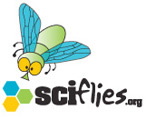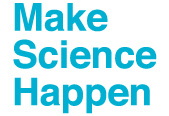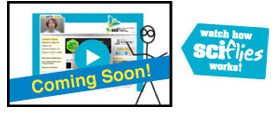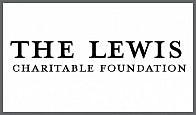News
The Meaning of SciFlies
What is SciFlies and what does it mean?
Yes, SciFlies is an enabler of societal problem solving and an expander of human knowledge. It is also an innovation accelerator, but it is also more; it is a test tube and experiment for democratic science.
What exactly is SciFlies, it depends on who is asking. The effect or meaning will change whether the question comes from a citizen or a scientist or government representative or from SciFlies itself.
Adding all those interests together, however, and SciFlies creates a deeper role and greater impact for science in society.
What does SciFlies mean? Rather than describe its elements with exacting detail, we opted for short ideas that can be expanded upon in the mind of the reader. The elements can be good, bad or neutral and almost certainly some are debatable points. The entire lengthy listing is what SciFlies “means” or “is” currently, but that will only change as the SciFlies experiment unfolds. But what is apparent is the importance of SciFlies and the relation it can have with science and society over time.
What does SciFlies mean, is, or do:
(144 ways to view SciFlies)
- Science itself has no inner wisdom which makes choices to society (and the future) obvious. Choices should be made freely with the counsel of scientists and by the people as a whole…
- Enables citizens to be a part and be more influential than they are today…
- SciFlies allows more citizen Control, Guiding and Shaping of innovation…
- Citizens can recapture some of the Power…
- Scientists as Citizens and Citizens as Scientists...
- Re-connects the public discourse back into Science…
- Further opens Societal Science to Scrutiny…
- Scientist and Laypersons become Responsible for Open Dialogue…
- Citizens can be part of the Science “Mount Olympus”…
- Citizens can be more literate in the major mover of society…
- Focus attention on areas of innovation that need help…
- Requires that Science and Scientists try to be understood…
- Helps tease out effective communication of science…
- It fosters not only PhDs but intelligent people…
- It will increase the Eureka Moments…
- It will increase Human Capital with enhanced innovation…
- Citizens can be Part of the Science “Priesthood”…
- It forms the “People Science Foundation”…
- Citizens can be a Modern Day Vannevar Bush…
- Citizens can be part of where the action in society is: energy, medicine, etc…
- Donors can help control the “politics of professional science”
- It can help create a more efficient science funding process…
- It can fund an Einstein or Galileo…
- It can inject more independence not dependence into science…
- Big science is not necessarily great science: fund “small” science…
- It helps organize scientists and citizen…
- SciFlies minimizes the R&D administration and housekeeping, by funding directly…
- It energizes the “think” factory…
- It helps create a “peoples” lab…
- Globalization and resource demand puts pressure for more SciFlies supported innovation…
- It supports that an investment in a PhD in science will pay itself back many time over…
- Let the government fund BIG science…
- Citizens take a seat on the intellectual expedition into the unknown…
- It will help create spin outs and jobs…
- What is the value to society of any science research area? You help answer that…
- You help Increase the odds for breakthroughs…
- Place your research money on the long shot…
- You add to a more balance control of science…
- You can make an impact on your fellow citizens…
- Help create a deeper market for and of science and technology…
- SciFlies is independence for the scientists and for the public…
- Increase the value of scientist in society, think beyond sports stars and rock stars…
- SciFlies as social responsibility…
- Is a translator for the language and specialization of science…
- Helps explain…
- Is a bridge from congress to the people…
- Helps minimize government bureaucracy…
- You can make science and the world never the same, again…
- Create a feedstock for the innovation pipeline…
- Help create a magnet for the innovators in society…
- SciFlies is anti-secrecy, open transparent science…
- Be a micro program manager…
- Be the conscience of science…
- Influence Policy through your directed $...
- Spur on the power of science…
- Help make celebrity-scientists…
- Help bring science out from the sanctuary…
- Help create New Industries…
- Help make future employment for your kids…
- Help reduce threats from nature or errant mankind…
- Help influence the direction of science: keep the beast tamed…
- If global warming and climate control is the new nuclear bomb, help keep the science free…
- SciFlies can educate and enlighten…
- Take the power to act…
- You make new Science History…
- Help create a relationship with your scientist…
- Help the US lead the globe in the new style of science…
- Do more with your taxes…
- The US is best suited to lead in the direction of global science, let’s act that way…
- Increase your emotional intelligence, through intelligent donations…
- Help the “little guy”…
- Help reduce the “political science”…
- Scientific Citizens are better for society…
- You provide scientists with a “voice”, your voice…
- SciFlies promotes the “data driven, objective and independent way of science in this partisan…
- Enable scientists as a critical resource for society…
- Open up the opportunity for public debate…
- Keep scientists responsible…
- Democratic Science: In a democracy the ultimate answer to where the science ship should go is a question that rests with the people…
- A better world is one that has both scientist and citizen working together…
- Influence science before it makes it into the market…
- SciFlies as economic offense…
- Science as security power…
- Draw a scientist out from their specialized field, and from specialization…
- Help scientist accept individual social responsibility for his/her work…
- Help create feedback and enable scientists to the view of the consequences of their research…
- Whole science projects, which are not specialized, are perfect for SciFlies…
- Make a super star scientist happen…
- Open up a part of society that is normally closed…
- Create a new breed of scientist: articulated scientist-citizen…
- Allow a forum for scientist to speak about the relevance and consequence of their work, and dispel confusion…
- Help accelerate our ability to combat the harmful slide of nature…
- Create independent, scientists, not political scientists, who research according to what party is dishing what funding…
- Change the nature of science/scientist and the press: “Scientific local press”: Provide another channel of communication to the public (your followers) beyond scientists and the media/press…
- Create a public response on important issues…
- SciFlies fosters Science Literacy…
- Allows scientists to spread the “gospel’ of science…
- Get guidance, opinion and mood from scientists on important issues…
- See if you can help create “common sense” science…
- Join expert and enthusiast as a team...
- Inject other fields of creativity (music, poetry, art) into science flow…
- Path to your political voice through your investment…
- Act as an independent “advisory body” to the science project and scientist…
- Challenge the use of public money for R&D…
- SciFlies as advice giver/feedback to government agencies and the science and technology committee…
- We are an evolution of the relation of congress to science…
- Everybody has an opinion, not everyone takes action, donate and propel forward….
- A Scientific Advisory Board manned by the people…
- If you have a need for politics, then you can be a “political citizen-scientist”
- SciFlies is the penetration of the internet further into science dynamics…
- Help promote/gain recognition for your scientist and his/her voice to advise the
- politicians…
- Help promote scientists in government…
- A peoples “Office of Science and Technology Policy” (i.e. advice into the Executive Office)…
- Can be a public advisor to the actual OSTP…
- SciFlies is a culture changer: science in culture…
- He who controls the purse controls the flow…
- The scientist as artisan and the micro-donor as benefactor…
- SciFlies- open to all – small dollars to large- representative of the people…
- A barometer for Science…
- A Trinity System: SciFlies-Gov’t-Science Community (people-gov’t-scientists)…
- Your tax dollars, you can choose where in R&D they go, direct and in control…
- SciFlies a buffer to the political winds…
- Fund both vetted and high risk projects…
- Bottom up approach working with the top down…
- An insurance premium against uncertainty…
- Directly donate: reduce bureaucratic fat in research and foundations…
- Helps further public trust in science…
- Gauge the social impact of science…
- Your actions will impact science and foreign policy…
- Fund fore-site projects that provide data for larger projects and programs..
- SciFlies as invention/innovation between science and forcing change in politics…
- You the donor provides over the horizon vision that you think this is where we are/should be heading…
- Science is the substratum upon which tomorrow’s technology is built…
- Participate in the science/technology wave, don’t get drowned by it…
- Make science in the service of society…
- Help shape and define what science means...
- Help create science with value and science with a human centered focus…
- Participate in your own small way as a contribution to the non-integrated national planning of science/tech…
- If the People =you and your progeny. Participate for you and your future generations…
- Your participation is a reward, play a role. Don’t be condemned to intellectual serfdom and blind acquiescence…
- Science researchers/teams are global, so enable global science- beyond borders…
- Contribute to the furthering of the sociology of science and the relation of science to society…
- Influence science toward human compassion and not simply technical achievement
Wheelchair design reborn to express dancer’s moves
Art and engineering get creative… together
The “Dance/Mobility Chair Project” at the University of South Florida is not “spinning wheels.” The effort to redesign a wheelchair that provides enough mobility for users to dance is rolling along nicely. But, the project needs a little more funding to continue testing and developing a unique prototype wheelchair that offers users the ability to dance, and may offer future users a whole lot more.
The project, initiated by Merry Lynn Morris, MFA, a faculty member in the University of South Florida’s College of Arts, had the full and happy collaboration of the USF College of Engineering’s Center for Assistive and Rehabilitation Robotics and the USF School of Physical Therapy. Early funding was internal to USF and has continued with small donations and a partnership with Custom Mobility, Inc.
“We wanted to change negative stigmas associated with disability,” said Ms. Morris. “That’s when we considered making a wheelchair that could be an instrument of human expression.
The concept included making a wheelchair that could be utilized on stage and in interaction with other dancers.
“It was a creative challenge,” said Ms. Morris. “We had to consider the project from an aesthetic, human, and expression-oriented focus, not just a functional one.”
However, functional aspects were not ignored, and that’s where the engineers came in to consider materials, sensory control options, versatility, tight turning radius, improved balance and enough speed capability to be able to support choreographic movement invention. They also considered ease of transport, seating options and movement possibilities. Onboard are multidirectional wireless capabilities and body connectivity control that frees the user’s arms and hands. The patented prototype chair allows the user to move the chair by simply leaning the torso.
The original chair was tested by a focus group of individuals both with and without disability.
The unique chair caught media attention and was the focus of stories on CNN and PBS.
Further research will include testing the prototype with a variety of populations. The benefits may go well beyond expression through dance.
“Our research has suggested that the chair we designed may have benefits in terms of energy efficiency and core conditioning, as well as freedom of expression,” explains Ms. Morris. “It will have implications for use in rehabilitation and for improving the daily mobility needs of general users because it integrates multiple movement options not currently available in commercial power chairs.”
##
Project: The Dance/Mobility Chair
Researchers: Merry Lynn Morris, MFA and Kathryn DeLaurentis, PhD
Affiliation: University of South Florida
Project duration: On-going, 24 months
Research funds needed: $25,000
The emergence of hyphenated science and the need for new funding sources
As scientists become more networked across space and research questions become more connected across disciplines the increase in the linking of science disciplines will continue. Along with the greater hyphenation of science disciplines, (for example bio-geo-chemical oceanography) comes the complexity of its information and the resultant management and reporting and visualization of results. In the past, biology and ecosystems sciences have addressed the complexity of information using systems modeling approaches and funding came from dedicated programs supporting the complex science observations. Will the same approach (current funding agencies) satisify the needs of complex and collaboraive science as the science topics become more webbed? As collaborative science grows and silo busting occurs can SciFlies help provide funding to projects that manage the cross disciplinary topics and are there limitations to how much integration can be expected from the public appreciation, and from SciFlies ability to manage the topics and finally from science itself. We hope that over time SciFlies can help spawn the methods and activities that can creating cross cutting knowledge areas.
What can minnows tell us about ecotoxicity?
Fathead minnow cells are the new “canaries in the cave”
“We produce over 70,000 chemicals that end up in freshwater ecosystems,” said Chris Vulpe, PhD, title at the University of California, Berkeley. “Worse, we don’t know the toxicity or potential environmental impact for the vast majority of these chemicals.”
According to Dr. Vulpe, current toxicity tests rely on expensive, slow, whole animal toxicity studies on many species, including fish. The current approach, he adds, is impractical and requires the use of whole animals to determine risks related to new and existing chemicals in fresh water ecosystems.
He and his co-researchers have a better idea.
“We intend to use cellular, high content cytotoxicity assays using the fathead minnow, an eco-indicator and sentinel species for freshwater ecosystems,” explained Dr. Vulpe, pointing out that just fathead minnow cells, not the whole fish, will be used for testing. “But, first, we have to test available high content screening assays designed for mammals for their suitability for fish cell lines.”
The scientists will test the suitability of inexpensive and rapid assays for evaluating 320 chemicals. Finally, established cell lines for the fathead minnow will be tested for response to a wide range of toxicants.
“We believe that our study will provide the first comprehensive analysis of high content screening using fish cell lines rather than whole animals,” said Dr. Vulpe. “The approach could radically transform ecotoxicity testing and provide rapid and inexpensive testing for toxic chemicals in the freshwater ecosystem.”
The researchers will use two different fathead minnow cell lines, one a tissue cell line (FHM epithelial), and the other an FHM liver cell line, recently developed. Testing will be carried out at the Berkeley Screening Center (http://bsc.berkeley.edu/) capable of carrying out high throughput High Content Screening.
To complete their first objective, a phase one study lasting three months will test the FHM epithelial line with five to 10 chemicals. Phase two will test the FHM liver cells with the same chemicals over three months. In phase three, they will test additional assays with the same two cell lines. The second objective will, in phase one, test the 320 chemicals in a high throughput format using both cell lines over a nine-month period. Phase two of the second objective will evaluate data and prepare for publication.
“This approach could significantly improve our capability to protect our aquatic ecosystems by making an assessment of the tens of thousands of chemicals for which no information is currently available,” concluded Dr. Vulpe. “Of course, the cell-based approach could also dramatically reduce the use of animals for testing chemical toxicity.”
##
Project: Cell-based assays of ecotoxicity: An alternative to animal testing
Researcher: Chris Vulpe, PhD
Affiliation: University of California, Berkeley
Project duration: 24 months
Research funds needed: $100,000
Exercise may help older brains grow, prevent dementia
Project needs $20,000 for further study
An eight-month clinical trial carried out in Shanghai, China has shown that certain forms of physical and mental exercise, including T’ai chi and social discussion may result in brain growth for older persons. Brain growth resulted in areas that shrink Alzheimer’s disease and improve memory and cognition. Researchers said the changes came on rapidly after only a few months of low cost intervention.
“While these results are important in showing how an underlying brain pathology of Alzheimer’s disease from causing dementia, there are many unanswered questions,” said James Mortimer, PhD, title, at the University of South Florida in Tampa, Florida
According to Dr. Mortimer, because Alzheimer’s disease results in significant cognitive loss associated with brain atrophy, maintaining brain tissue in specific regions could help delay dementia.
Their recent research were encouraging because they found that people who were randomized into three groups who participated in T’ai chi, social discussion and fast walking for 40 weeks not only had increased brain growth but also improved on selected cognitive tests. Those in a fourth control group who did not receive the interventions did not improve.
“We know that people with larger brain volumes and larger head size have a reduced risk of dementia in later life,” explained Dr. Mortimer. “One important underlying question is whether the response we saw will occur in all individuals or just in those with certain genetic profiles.”
They will also examine the benefit of physical and mental exercise on brain-derived neurotrophic factor (BDNF). Ultimately they hope to compare the results of interaction between the APOE gene and BDNF.
The researchers are proposing to examine the different forms of the APOE gene, the main gene recognized for susceptibility to Alzheimer’s disease to determine if those with genetic susceptibility benefit from physical and mental exercise.
“There is considerable evidence showing that the pathology of Alzheimer’s disease begins decades before the symptoms,” said Dr. Mortimer. “This provides a window of opportunity for prevention.”
The researchers note that although the benefits of exercise have high acceptance among older persons, participation in exercise activities by older people is limited.
“When people know that they could benefit directly motivation may increase participation rates,” concluded Dr. Mortimer
##
Project: Prevention of Alzheimer’s disease through brain growth
Researcher: James A. Mortimer, PhD
Affiliation: University of South Florida
Project duration: 12 months
Research funds needed: $20,063
SciFlies Artists
SciFlies' job is to help fund new and developing research but that's not all we are interested in. We also have connections with the innovators and engineers who entertain us and continue to explore the boundaries of self-expression. Here are a few links to those artists/stroy-writers who support the continual exploration and developement of both science and the arts.
Adi Newton (Clock DVA)
Clock DVA are an industrial music, post-punk and EBM group from Sheffield,England. The group was formed in 1978, with two members, Adolphus "Adi" Newton and Steven "Judd" Turner. Along with contemporaries Heaven 17, Clock DVA's name was inspired by the Russian-influenced Nadsat of Anthony Burgess' A Clockwork Orange; "dva" is the Russian word for "two". Adi had previously worked with members of Cabaret Voltaire in a collective called The Studs and with Ian Craig Marsh and Martyn Ware in a band called The Future.
http://www.myspace.com/clockdvaauthorized
Ally Way
Ally Way is a 2009 DC Commission on the Arts and Humanities Young Artist Grant Award winner and CEO of AK Way Publishing and Florals and Foxtails Entertainment. She has performed around the world in several different genres and languages. Ally Way writes, records and produces all of her own material and encourages other artist to do the same. Music is Ally's full time profession and had dedicated her academic career to such also. She attended University of Maryland, College Park, where she studied voice and music education with Carmen Balthrop and Francois Loup. Ally is a pianist, guitarist and poet. She is in the process of publishing two books: "Two Over Twenty" and "Power Affirmations for Artist". 2010 is going to be a big year for Ally so stay tuned and look for her on i-tunes and in your city soon! .. For LIVE show bookings and other musical endeavors e-mail [email protected]
http://www.myspace.com/allisontheway
Will Murray
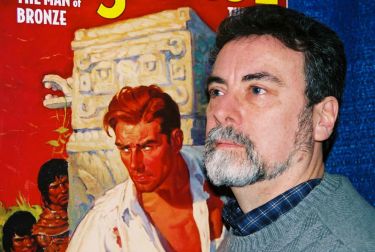
Will Murray (born April 28, 1953) is the author of more than fifty novels, a scholar of pulp fictionand a writer of numorous comic books. Much of his fiction has been published under pseudonyms. Murray is the literary executor for the estate of Lester Dent, the creator of Doc Savage, and has published eight Doc Savage novels from Dent's outlines under Dent's pseudonym, Kenneth Robeson, the most recent of which, The Desert Demons, is the first release in Altus Press's new Wild Adventures of Doc Savage series.
For the Scientists who want to submit their project proposals
Welcome Scientists!
And future SciFlies funded investigators!
We are pleased to release the SciFlies effort to the general public and are confident the program will be a success. We are interested in additional projects so please consider submission of your best ideas. To submit you need to register at the SciFlies site, once registered you need to log in to the site again where you will then be given the opportunity to “Post a Project”. Go through the steps provided. The first key step is to generate a 6 page maximum proposal which will be reviewed by AAAS selected peers (also, coming soon is an option to submit a high risk non-peered reviewed project). After an approval of your project you can then post the project through the website and let the public help you Make Science Happen! You can find more information within the Post A Project section of the SciFlies website.
